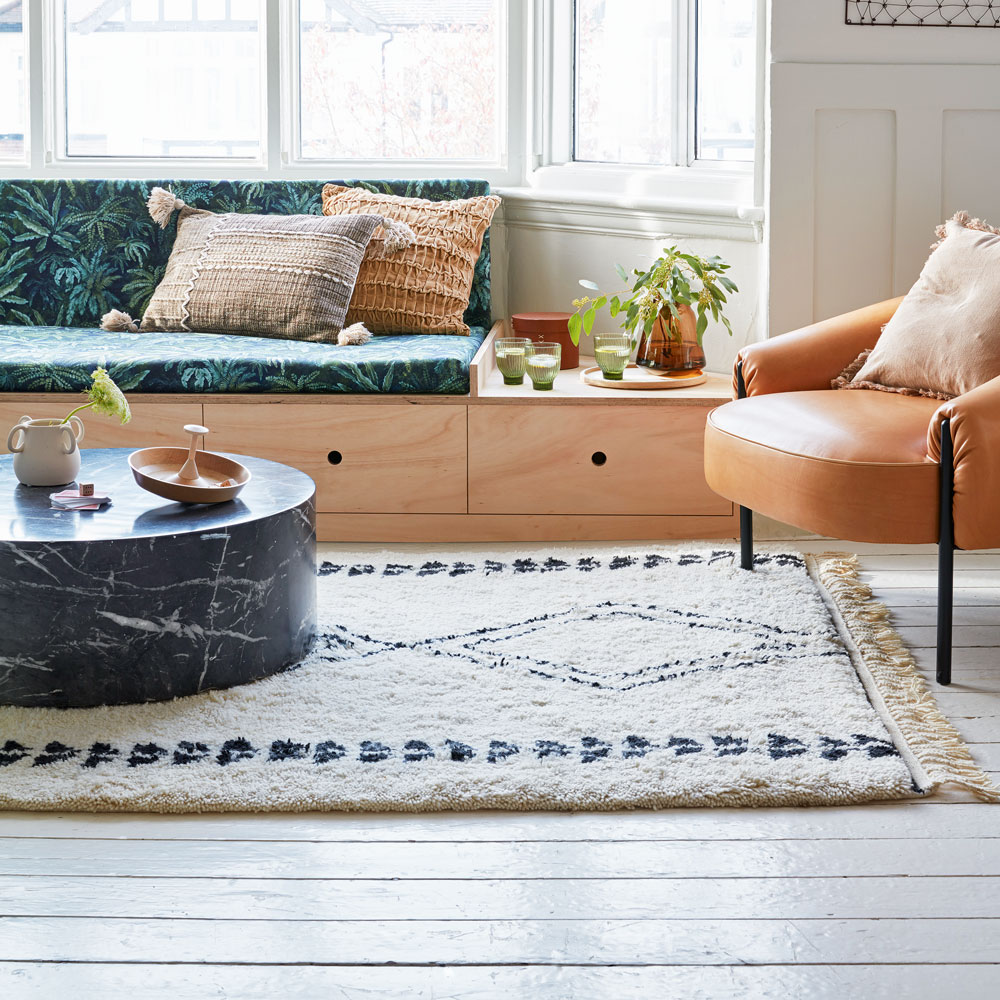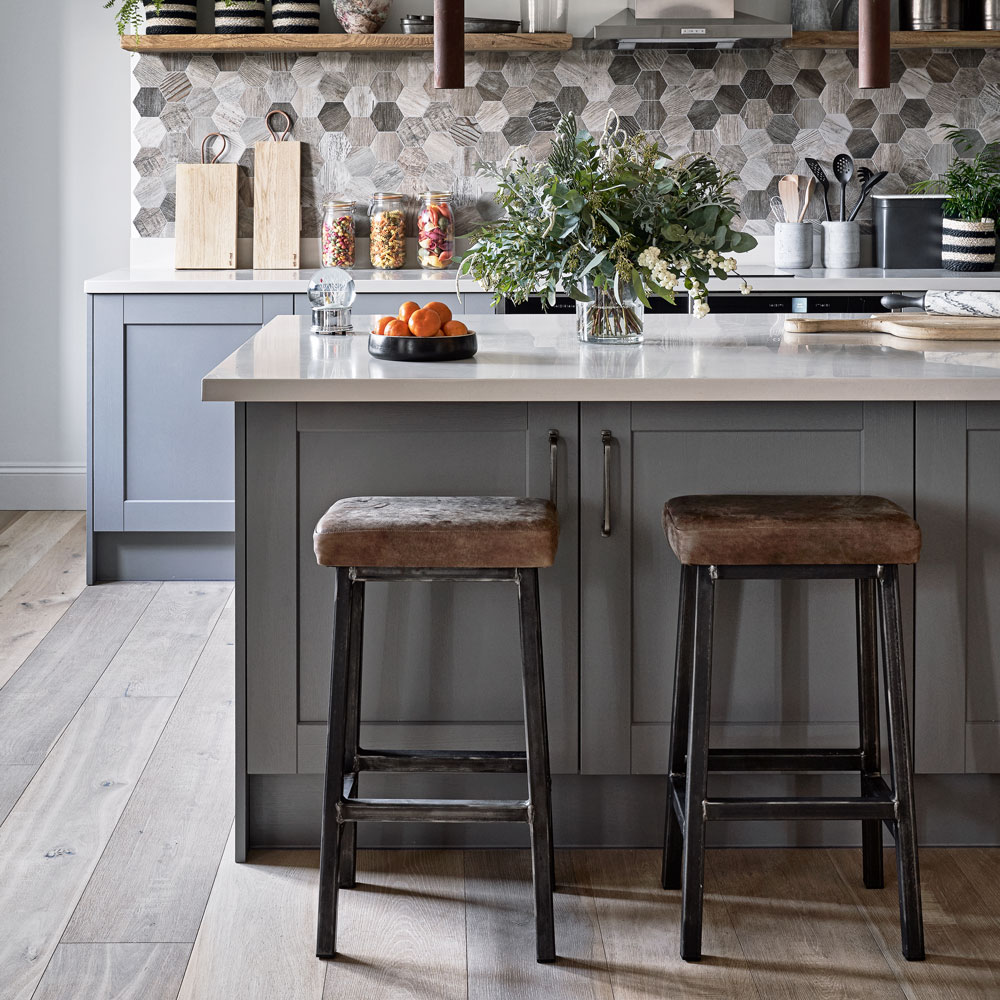Can you have underfloor heating with wood floors? We explain all...
Find out whether this characterful natural wooden flooring solution works with underfloor heating

When adding central heating to a home, your flooring choices comes into question. Having underfloor heating with wood floors is one of those that causes something of a debate, so we're here to answer this for you.
So, in brief - can you have underfloor heating with wooden floors? 'Both water and electric underfloor heating systems can be paired with wooden floors, as the material conducts and holds the heat produced by your underfloor system and radiates it into the room above,' says Sarah Wazir, a marketing executive at Warmup.
However, there’s a lot to think about when installing underfloor heating with wooden floors, from the thickness and density of the boards to the moisture content of the timber.
Things to consider when using underfloor heating with wood floors

Before embarking on your underfloor heating with wood floors project, we break down five critical areas you need to understand about underfloor heating with wood floors...
1. Thickness of wood
Wood is a natural insulator, so the thickness of the boards will impact on the transfer of warmth from your underfloor heating system and through the floor surface above. Most manufacturers recommend that the timber should be no more than 18mm thick.
'Also, as wider boards tend to show more movement than narrow alternatives, a good rule of thumb is that the ratio of thickness to width should be around seven to 11,' says Sarah from Warmup. 'A 16mm-thick, 160mm wide product gives a ratio of 10, which is ideal.'
2. Thermal conductivity
A setup with good thermal conductivity provides a better heat output overall, which means it’s more cost-effective to run. 'Typically, the denser and thinner the wooden boards are, the more heat that will pass through easily,' says Kimberley Thompson, contact centre manager at Flooring Superstore.
Sign up to our newsletter for style inspiration, real homes, project and garden advice and shopping know-how
When you are considering how efficient underfloor heating is, it’s worth bearing in mind that as a natural insulator, wood will take more time to heat up than a covering such as porcelain tiles when your UFH is switched on.
3. Expansion and contraction
Wood is a hygroscopic material, which means it absorbs moisture from the environment around it, leading it to expand over time. When it cools, the wood contracts. This is an important consideration to bear in mind when you have underfloor heating, as drastic fluctuations in temperature could cause your floor surface to warp over time.
'All wood flooring must have an expansion gap of minimum 10mm around the perimeter of the floor,' says Peter Keane, director of The Natural Wood Floor Company. 'This allows space for the wood floor to expand and contract when there is a rise in humidity levels or when the heating is turned off.'
4. Water systems
There are two types of hydronic system: screeded and non-screeded. The one that’s right for your home will depend on the type of subfloor you have. If, for instance, you are installing UFH in a period home with suspended timber floors, the pipes that circulate warm water to heat the floors can be suspended between the floor joists, with insulation laid beneath.
A screed or self-levelling compound is then poured over the pipework to ensure an even spread of heat across the room. If you have a concrete floor slab, the pipes can simply be laid over the top of that, so it’s less labour intensive. Be sure to discuss the options with your underfloor heating supplier so you can choose the best solution for your scenario.
5. Electric systems
Loose cables or sticky mats comprised of electrically heated wires are the basis of an electric underfloor heating system. 'Typically, we’d recommend our foil heater for wood floors,' says Sarah from Warmup. 'This mat-based setup can be installed quickly beneath wood flooring and other types of floating floor. The heated wires are wrapped in foil, offering excellent thermal conductivity into the timber floor above.'
Explore a range of electric underfloor heating systems at The Underfloor Heating Store to find an option which will work best with your wooden flooring.
What woods work best with underfloor heating?

1. Engineered
Designed to limit expansion and contraction, this solution comprises a surface layer of real wood, fixed atop cross-laid sheets of plywood. Thanks to its sturdy construction, engineered wood is generally thought of as being the best timber flooring solution to fit over underfloor heating.
The layered construction means that the surface expands and contracts as a complete floor rather than individual boards.
The top veneer of hard or softwood timber varies in thickness, depending on the product you go for, but means the flooring is durable. Solutions with a thicker surface veneer offer a longer service life.
On the downside, the thicker the board, the longer it’ll take to heat up. Therefore, you might need to specify your UFH at a higher output temperature than you would with other materials, like ceramic or porcelain.
2. Hardwoods
Sustainable, durable and long-lasting, hardwoods like oak are highly sought-after. However, many flooring suppliers advise against pairing solid boards with underfloor heating, as the planks don’t offer the same dimensional stability as engineered products.
'Solid hardwood flooring will express considerably more movement over an UFH system compared to an engineered construction,' says Greg Elliot, head of technical at Havwoods. 'If you’re willing to accept this greater amount of movement, there are solid options available – but going with an engineered floor is the safest solution.'
Quarter-sawn timber is less likely to warp when installed alongside underfloor heating. Narrow boards also work better than wide planks, as broader planks will be subject to greater expansion.
3. Laminates
Featuring a sturdy fibreboard core topped with a photographic layer and a protective clear finish, laminate boards mimic the look of real wood. Hard-wearing, budget-friendly and easy to clean, laminate flooring is resistant to the temperature changes from UFH. Meaning it won’t warp or buckle at higher temperatures.
Slimmer laminate boards (up to 18mm) offer the best heat transfer. Water-based UFH is typically the best partner for laminate floors, as some manufacturers recommend that their laminate products are not laid over electric underfloor heating. A maximum temperature of 27°C is recommended to avoid any damage to your laminate surface.Tips for installing underfloor heating with wood floors
Tips for installing underfloor heating with wood floors

- Consider the underfloor heating costs. Understand the installation and running costs as well as the cost of the timber.
- Before installation of underfloor heating with wood floors, pay close attention to the details of your UFH specification. 'Make sure there is an even spread of heat from your UFH,' says Greg from Havwoods. 'This will limit surface overheating.'
- Prior to fitting, allow timber planks to acclimatise for at least three days in the room where they will be fitted.
- Once your flooring has been fitted above the UFH, wait at least two days before turning the system on. 'It’s recommended that the heating is turned up gradually, in 1°C increments to further acclimatise your floor,' says Kimberly from Flooring Superstore.
- Allow space for an expansion gap (at least 10mm) around the perimeter of the room.
- If you’re using a screeded UFH system with your wood floors, ensure you allow plenty of time for this to dry out before laying the flooring. As it will add extra moisture to the timber if it hasn’t dried out properly.

Rebecca Foster started her journalism career in Bangkok in 2013, where she worked on the in-house editorial team at a luxury homes magazine. Since then, Rebecca has contributed to numerous property and interiors titles in the UK and Southeast Asia. She re-located to London in 2015 to work at one of the country’s leading self-build and home renovation magazines. In 2017, she left her job to split her time between freelance journalism and teaching yoga.